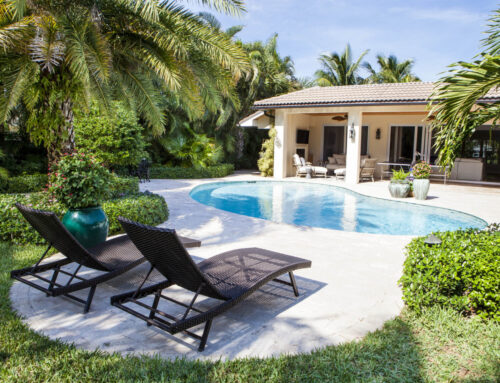It is rare to go to a pool full of kids and not see every young child wearing water wings or “arm floaties.” The truth is, they are hugely popular with kids and parents alike. But are water wings a good idea for toddlers? Here is the thing: Water wings are no substitution for parental supervision and for teaching young children to swim. As in vogue as they seem to be, water wings are not generally recommended for toddlers by swimming experts. Let’s talk about why that is.
Floaties Do Not Keep Children Safe
It is a big mistake for parents to believe that water wings or floaties keep a child safe from drowning. Floaties can slip off or deflate easily. Water wings are not considered to be an effective personal flotation device.
Water Wings May Cause Parents to Be Less Attentive
Parental supervision is critical when a child is in the water. If your toddler is in the water, you should be within arm’s reach of the child and watching them every moment. Relying on arm floaties to keep a child safe from drowning is a mistake. Water wings are not a babysitter you can count on while you check your phone or run into the house to grab a soda. Never leave your child unattended when they are in the water. Better yet, get in the water and enjoy playing with them!
Water Wings Give the Child False Security
A child who exclusively wears water wings when in a swimming pool may think they can stay afloat without them, thinking that they can “swim.” Use your time with your kids without floats on to help them experience the water and their own abilities. It will help them think twice about getting in the water without a parent close by.
Water Wings Keep Children in the Wrong Position for Swimming
When a toddler wears floaties, they are held upright in a vertical position. This is not the position appropriate for floating or swimming. When a child is learning to swim, it is essential that they feel comfortable being in a horizontal position in the water. If a child has worn water wings while in a pool, it can be a difficult adjustment for them to learn how to float horizontally.
Provide Children with Swimming Lessons
As early as one year of age, babies can be taught water survival skills that can help prevent drowning. These skills are floating, dog paddling, and getting to the side of the pool. Ideally, parents will have spent a good deal of time in the water with their children reinforcing these basic skills. By the age of 3 or 4, most children can be taught to swim. The emphasis in these first lessons will still be on water survival competency skills such as getting out of the pool, propelling themselves forward at least 25 feet, and rising to the surface from underwater. These activities are the foundation of developing true water safety and future swimming techniques. Once the child is 5 or 6 they can learn to master specific swimming strokes and proper technique. Even when your child has learned to swim, it is important not to underestimate the continued need for parental supervision and involvement.
So, are water wings a good idea for toddlers? The answer is no. The reliance on them can actually undermine your child’s ability to learn to swim and be safe in the water. Experts do not consider them an effective device to prevent drowning.
Molinari Pools is a passionate advocate of drowning prevention and is a member of the National Drowning Prevention Alliance. Our professionals are a great resource for your questions on pool safety measures such as fencing, pool alarms, and pool netting. Questions about safety for your pool? Give us a call today at 772-778-2633 to discuss your options.












Leave A Comment